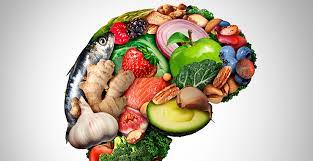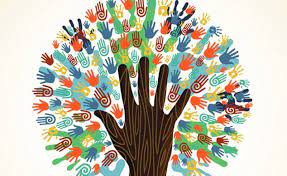Essence of Clean Living:
Natural Nutrition: Embracing whole, unprocessed foods, organic produce, and mindful eating practices that support health and well-being.
Toxin-Free Environment: Eliminating or minimizing exposure to harmful chemicals, artificial additives, and pollutants in personal care products, household items, and environments.
Sustainable Living: Adopting eco-conscious practices, reducing waste, embracing renewable resources, and supporting ethical and sustainable products and practices.
Components of Clean Living:
Nutrition and Diet:
Whole Foods: Prioritizing fresh fruits, vegetables, whole grains, lean proteins, and plant-based options while reducing processed and artificial ingredients.
Hydration: Opting for clean, filtered water and reducing reliance on sugary or artificially flavored beverages.
Mindful Eating: Practicing mindful consumption, savoring meals, and cultivating a healthy relationship with food.

Toxin-Free Lifestyle:
Natural Personal Care: Choosing natural skincare, cosmetics, and personal care products free from harmful chemicals and additives.
Green Cleaning: Using environmentally friendly, non-toxic cleaning products and methods to maintain a clean living space.
Air and Water Quality: Ensuring clean air and water at home through air purifiers, filtration systems, and toxin-free water sources.
Mind-Body Wellness:
Physical Activity: Incorporating regular exercise, yoga, or meditation for physical fitness and mental clarity.
Stress Management: Practicing stress-relief techniques, mindfulness, and relaxation exercises to support mental health.
Quality Sleep: Prioritizing restful sleep through sleep hygiene practices and creating a conducive sleep environment.
Sustainability and Eco-Conscious Practices:
Reducing Environmental Impact: Minimizing waste through recycling, composting, and adopting a low-impact lifestyle to reduce the carbon footprint.
Ethical Consumerism: Supporting ethical and sustainable brands, fair-trade products, and environmentally responsible companies.
Nature Connection: Spending time outdoors, fostering a connection with nature, and appreciating the natural world's beauty and serenity.
Embracing Minimalism and Simplicity:
Decluttering and Organization: Streamlining possessions, adopting minimalism, and organizing living spaces for clarity and peace of mind.
Intentional Living: Prioritizing experiences and relationships over material possessions, cultivating gratitude and contentment.
Mindful Consumption: Being deliberate about purchases, valuing quality over quantity, and avoiding unnecessary consumption.
Community and Social Connection:
Community Engagement: Participating in local initiatives, community gardens, or environmental groups promoting sustainability and clean living.
Sharing Knowledge: Educating others about clean living principles, sharing experiences, and supporting a community of like-minded individuals.
Collaborative Sustainability: Collaborating with local businesses, advocating for eco-friendly policies, and supporting initiatives for a greener, cleaner community.
Challenges and Adaptation:
Accessibility: Overcoming challenges related to access to organic produce, sustainable products, or eco-friendly options in certain areas.
Balancing Costs: Navigating the potential higher costs associated with organic or sustainable products and finding affordable alternatives.
Community Influence: Navigating social norms or peer pressure that may conflict with clean living choices, finding balance and staying true to personal values.
Continuous Growth and Evolution:
Education and Learning: Continuously seeking knowledge about sustainable practices, new eco-friendly technologies, and clean living advancements.
Personal Growth: Embracing a growth mindset, adapting clean living practices based on evolving personal values and environmental awareness.
Advocacy and Influence: Using personal experiences to inspire others, advocating for cleaner living practices, and influencing positive change within communities.
The clean living lifestyle is a conscious choice, a commitment to personal health, environmental stewardship, and mindfulness in everyday decisions. It's about embracing simplicity, sustainability, and a deeper connection with oneself and the world to foster a cleaner, healthier, and more harmonious existence.
Natural Home Environment:
Indoor Plants and Green Spaces: Incorporating indoor plants and creating green spaces at home to improve air quality and promote a closer connection to nature.
Natural Lighting: Utilizing natural light sources, optimizing windows, and reducing reliance on artificial lighting for a healthier home environment.
Non-Toxic Home Furnishings: Choosing eco-friendly and sustainable furniture, textiles, and decor made from natural materials without harmful chemicals.
Outdoor and Environmental Engagement:
Sustainable Gardening: Practicing organic gardening, composting, and using eco-friendly gardening practices to cultivate a sustainable outdoor space.
Environmental Advocacy: Engaging in environmental activism, supporting conservation efforts, and advocating for policies that promote sustainability and clean living.
Nature Immersion: Participating in outdoor activities, nature walks, hiking, or camping to foster a deeper connection with the natural world.
Eco-Friendly Transportation:
Active Commuting: Embracing walking, biking, or using public transportation to reduce carbon footprint and promote a cleaner environment.
Electric and Hybrid Vehicles: Opting for eco-friendly transportation options such as electric cars or hybrid vehicles to minimize environmental impact.
Car-Free Initiatives: Supporting initiatives that encourage car-free zones, carpooling, or shared transportation for reduced emissions.
Ethical Fashion and Consumerism:
Sustainable Wardrobe: Embracing sustainable fashion, investing in quality, timeless clothing, and supporting ethical brands with fair labor practices.
Second-Hand and Upcycling: Choosing second-hand clothing or upcycling garments to reduce textile waste and promote a circular fashion economy.
Capsule Wardrobe: Adopting a minimalist wardrobe approach, curating a smaller collection of versatile, high-quality clothing items.
Mindful Digital Habits:
Digital Detox and Screen Time Management: Practicing mindful use of technology, taking breaks from screens, and setting boundaries for healthier digital habits.
Sustainable Tech Practices: Choosing eco-friendly devices, supporting companies with responsible e-waste recycling programs, and reducing energy consumption.
Green Computing: Implementing energy-saving settings on devices, utilizing cloud storage for reduced hardware use, and participating in electronic waste recycling initiatives.
Spiritual and Emotional Wellness:
Mindfulness Practices: Engaging in meditation, journaling, or mindfulness exercises to cultivate emotional balance and inner peace.
Holistic Healing: Exploring alternative therapies such as acupuncture, herbal medicine, or energy healing for holistic well-being.
Connection with Community: Participating in community gatherings, spiritual groups, or support networks to foster a sense of belonging and emotional support.
Educational Initiatives and Awareness:
Community Workshops: Organizing or participating in workshops, seminars, or educational events promoting clean living principles within communities.
School Programs: Advocating for clean living education in schools, incorporating eco-friendly practices and sustainability into educational curriculums.
Media and Information Sharing: Using social media, blogs, or podcasts to share information, resources, and experiences related to clean living principles.
The clean living lifestyle embodies a multitude of choices and practices that aim to foster personal well-being, environmental sustainability, and a more conscious way of life. It's about making intentional choices in various aspects of daily living to promote health, sustainability, and harmony with the environment and oneself.



You must be logged in to post a comment.